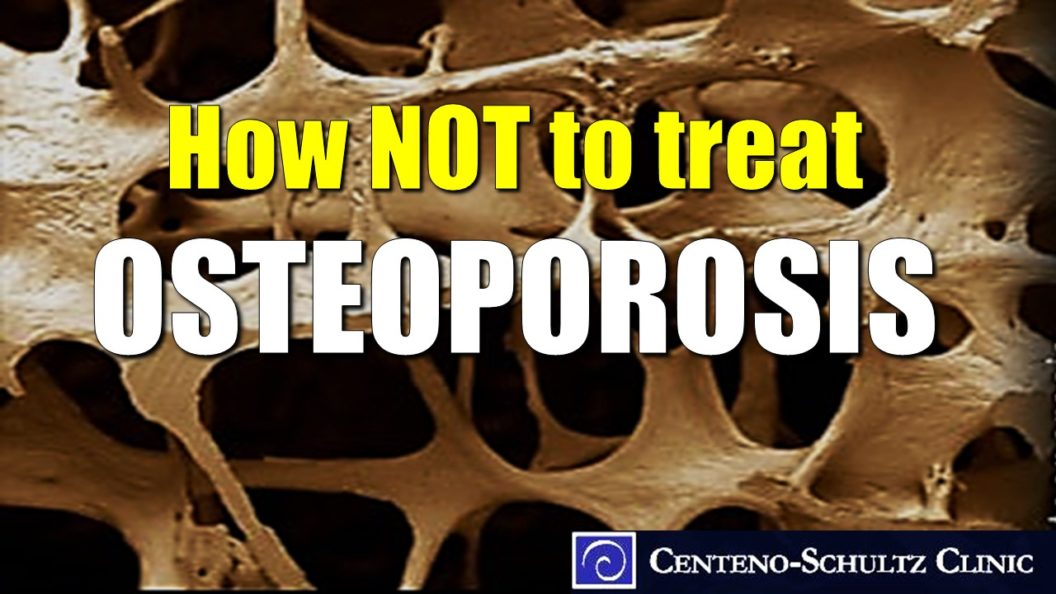Osteoporosis. In a perfect world, we would all diligently focus on whole-body health, including bone health, from childhood throughout old age. The reality, however, is that there are many more living primarily sedentary lifestyles and consuming poor diets than there are living that perfect-world lifestyle. Taking this a step further, it’s likely the majority of us fall somewhere in between, roller-coastering through various health phases throughout our lives.
If you aren’t staying proactive about bone health, you’re increasing your risk for osteoporosis as you age. And since osteoporosis is such a common disease and you may be reading this article because you are already struggling with it, today we’re going to focus on what not to do for your osteoporosis. First, let’s review osteoporosis and how to lower your risk and focus on bone health.
Understanding Osteoporosis
Our bones are in a constant state of replacement. There are two types of cells primarily responsible for this process: osteoclasts and osteoblasts. Osteoclasts break down and reabsorb old bone, while osteoblasts form new bone. Osteoporosis occurs when osteoblasts, the bone-forming cells, become less active. So the osteoclasts are still doing their job, breaking down bone, but the osteoblasts can’t keep up with replacing it. This creates more porous, less dense bone, which results in weaker, more fragile bones. Those with osteoporosis are at a much greater risk for bone fractures; depending on severity, a minor fall or even a strong sneeze, for example, can result in a osteoporotic bone fracture.
While osteoporosis occurs in both women and men, women are especially susceptible as not only do women naturally have less bone mass, but hormonal imbalances brought on by menopause add to the challenge of bone health. This is why, for women, it is so important to stay on top of hormone changes as they reach middle age.
What to Do to Lower Your Risk of Osteoporosis
In addition to keeping hormones in balance, you can lower your risk for osteoporosis by maintaining a healthy diet and exercising regularly (weight-bearing exercise is good for building strong bones) as well as staying away from substances known to affect bone mass, such as alcohol and tobacco. If you already know you are prone to developing osteoporosis due to a family history of the disease, for example, supplementing with curcumin, which has been shown to increase osteoblast production (those cells that form bone) is a good strategy for being proactive against osteoporosis.
If you already have osteoporosis, you may be presented with many different options for treating or alleviating the symptoms of the disease. Unfortunately, many of these options, which range from the common to the ridiculous, are actually things in the category of what not to do for osteoporosis. Let’s take a look at a few.
What Not to Do for Osteoporosis
Let’s start with a pharmaceutical drug often prescribed for osteoporosis: Prolia. Prolia turns off the activity of osteoclasts, those cells that break down the bone, so bone is no longer breaking down faster than the bone-building cells can create it. Sounds like a good idea, however, Prolia has been shown to cause fractures, interestingly not while taking the drug, but once a patient has stopped the prescription. The study included nine women who soon after stopping Prolia experienced a total of 50 vertebral fractures (backbone fractures) that the researchers attributed to a rebound effect of the Prolia! Why? Prolia also seems to impact bone-building cells (osteoblasts); in our experience, it appears Prolia may damage mesenchymal stem cells, the cells that produce those bone-building cells. If you are currently taking Prolia, be sure to talk with your physician before stopping the drug.
What about those fat stem cell treatments for osteoporosis? Just don’t do it! If someone is recommending fat stem cell therapy for osteoporosis, know that this is not a legitimate treatment. Don’t confuse this with bone marrow stem cell treatments, which are appropriate for treating bone issues. Fat tissue does have some structural components that can support bone marrow stem cell treatments of the musculoskeletal system; however, only stem cells from bone marrow have the appropriate bone-building tissue properties for treating bone and other musculoskeletal structures.
Last, but certainly not least, in the what not to do for arthritis guidelines, don’t be drawn in by the marketing tactics of companies pushing vibration plate therapy (to the tune of thousands of dollars) as a way to increase bone mass and, therefore, address your osteoporosis. Many studies have shown these simply don’t work. You might see these marketed at “osteoporosis therapy” or “whole body vibration” machines. The idea: you stand on it for a few minutes each day, it vibrates, and your bone mass magically increases. If it sounds too good to be true, and this does, it is. Opt for good old-fashioned exercise that incorporates some resistance weight work instead.
In most cases, proactive bone maintenance and healthy lifestyle choices can decrease your risk or slow the progression of osteoporosis. If you have already been diagnosed with osteoporosis, it’s not too late to take some steps to properly care for your bones. Once you’ve experienced a backbone fracture due to osteoporosis, you may be considering a procedure, such as a vertebroplasty or kyphoplasty. We’re dedicating a whole post to this next week, so be sure to tune in.
